Belt Tensioners Enable Full-Suspension Innovation
This article was originally published at Bike Europe, and can be found at https://www.bike-eu.com/products-innovations/artikel/2021/05/belt-tensioners-enable-full-suspension-innovation-10140505
Belt tensioners designed to Gates Carbon Drive specifications are allowing manufacturers to create high-performance, chain-free, full-suspension mountain bikes. To encourage innovation, Gates is releasing best-practice guidelines for belt tensioners—and encouraging manufacturers to partner on new designs.

When Scottish mountain bike racer and coach Ramsay MacFarlane rides his full-suspension Nicolai in Scotland’s mud and foul weather, he relies on a simple but important technology to keep his Gates Carbon Drive belt working properly: a belt tensioner.
Consisting of a small wheel attached to a spring-loaded arm, the tensioner applies pressure to the belt when the rear suspension activates, eliminating slack and keeping the belt tight. “The belt tensioner applies the perfect amount of leverage and allows the belt to stay perfectly tensioned on the sprockets throughout the travel,” MacFarlane says.

More Bikes, More Fun
Belt tensioners like the one on MacFarlane’s Nicolai Ion G16 GPI are being used on more bikes every year. Other advanced belt-drive models using Gates-approved tensioners include the Katipo mountain bike from Zerode, the Load 75 electric cargo bike from Riese & Müller, the ST2 Launch Edition electric commuter from Stromer, and the Ca Go cargo ebike.
For full-suspension riders, these new belt tensioners mean they get a super-strong drivetrain with no chain maintenance. “The belt lasts for so long!” says MacFarlane, who has raced his Nicolai in the Enduro World Series. “I would expect to replace a chain about twice a year but now I can rely on my belt to last for multiple years. I still haven’t worn one out.”
Pinion Tensioner
Tensioners provide an alternative to traditional methods of belt tension–sliding dropouts and eccentric bottom brackets.
Sliding dropouts and eccentric bottom brackets work great on hardtails, but not on full suspension bikes where the distance between the rear axle and bottom bracket shortens when the shock compresses. That is why chains rattle when descending rocky trails.
Gates plans to sell tensioning systems in the future. Until then it is helping bike and component manufacturers design their own. Gearbox maker Pinion has developed their new BT1 belt tensioner which will be available to manufacturers in Q4 of 2021. The focus of Pinion’s development was to create a tensioner that would work well with almost all types of rear suspension kinematics. “The BT1 belt tensioner combined with Pinion gearbox and Gates Carbon Drive unlocks enormous potential for sophisticated, full-suspension bicycles,” says Dirk Stoelting, Pinion Brand Manager.

Spring-Loaded, Fixed Arm
There are two primary designs:
Fixed tensioners include a wheel connected to a rigid arm. These are recommended for rigid frame or hardtail bikes.
Spring loaded tensioners are for full-suspension bikes. As the rear suspension activates, shortening the distance between the rear axle and bottom bracket, the spring applies pressure that absorbs slack and keeps the belt tight.
Engineering Support and Design Guidelines
Gates requires manufacturers to follow design guidelines and submit their designs for approval to ensure they function properly and do not damage the belt’s carbon cords. Guidelines include:
The tensioner wheel must have a minimum diameter of 50mm and a minimum width of 14mm.
Tensioners can be mounted on the bottom bracket, or near the rear sprocket on the dropout or stay.
The tensioner wheel must contact the flat backside of the belt, not the toothed side. Tensioners that push against the toothed side of the belt can reduce contact with the sprockets.
The tensioner should apply pressure to the slack span of the belt, which normally rotates away from the front sprocket towards the rear. The tensioner should not apply pressure to the tight side.
Belt tensioners may only be used with premium CDX belts.
Tensioners must maintain proper belt tension throughout the entire range of suspension travel.

Full suspension Innovation
“Our efforts to help create approved tensioners shows how Gates is continually working with OEMs to make it even easier to use belts on more styles of bikes,” says Joe Menzel. “Thanks to these tensioners, the era of full-suspension belt-drive bikes is here.”
